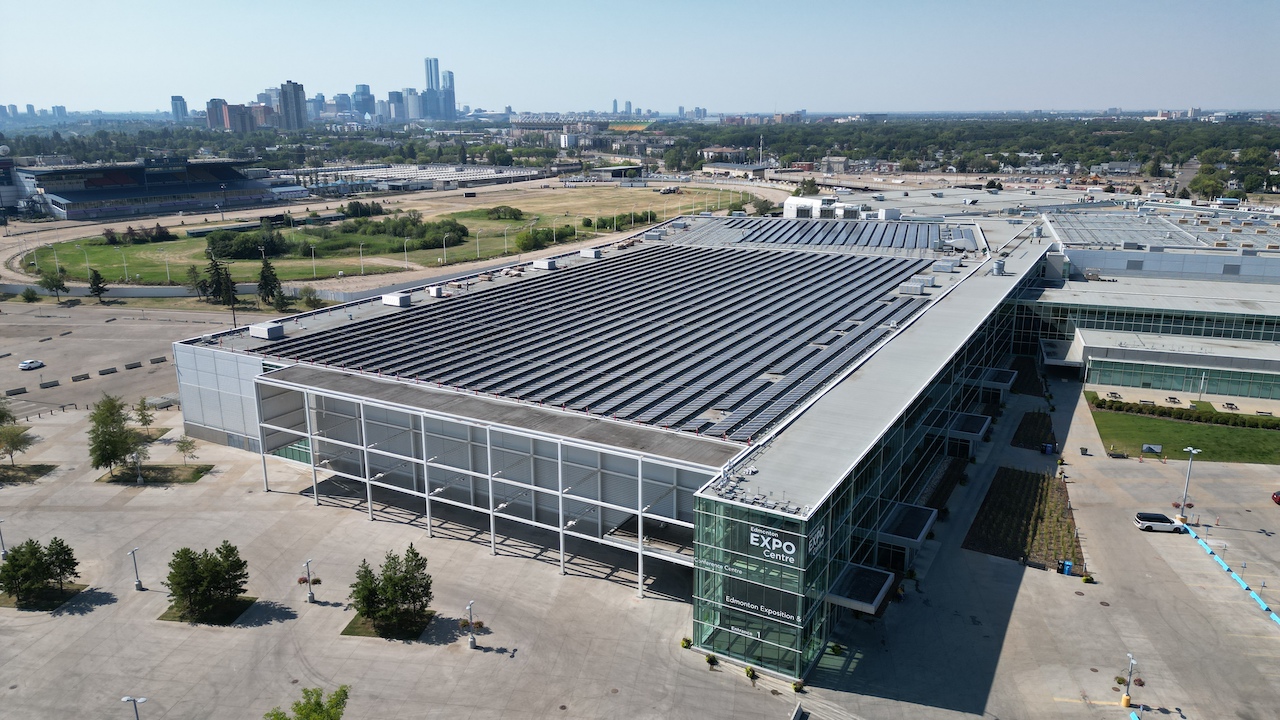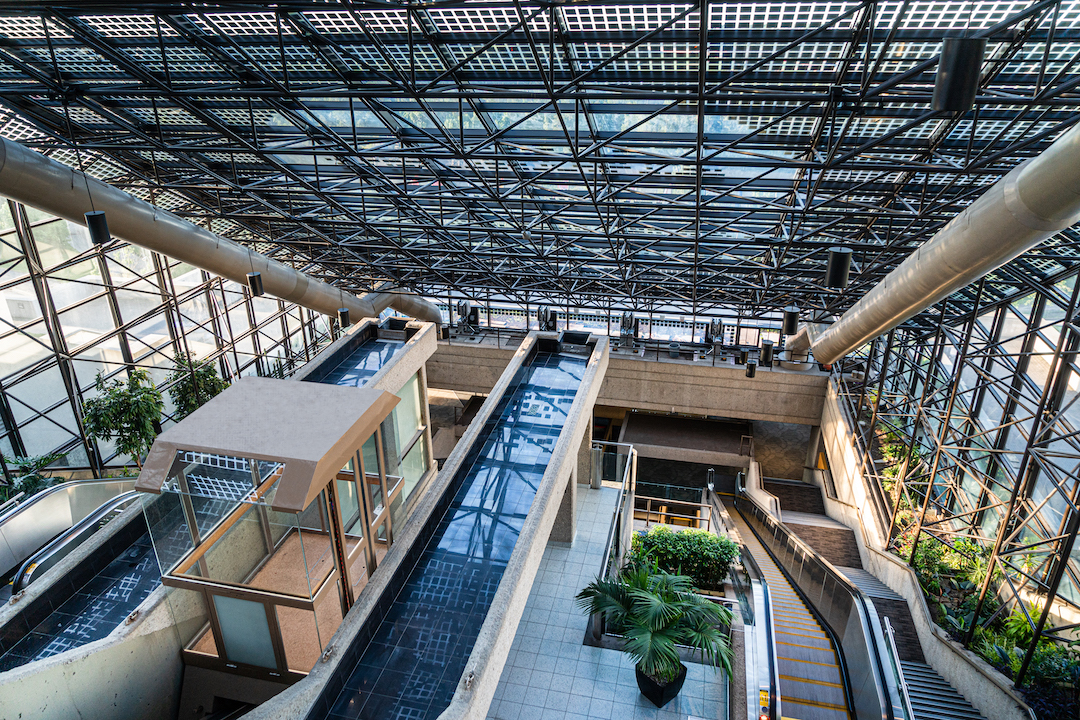The Edmonton EXPO Centre now hosts Canada's largest rooftop solar array, and it's one large piece of a $98-million puzzle to improve the centre's carbon footprint.
Phase one of adopting solar at the EXPO cost around $5 million and was completed in August. "We're thinking it will save us somewhere between $290,000 to $460,000 a year just in our operational costs," Melissa Radu, the director of social and environmental sustainability at Explore Edmonton, told Taproot.
Explore Edmonton's Carbon Reduction Plan 2023 charts a course to net-zero emissions by 2050. It includes a greenhouse gases report, which says it installed 5,754 solar panels that cover 193,735 square feet at the EXPO in 2023. The panels can generate approximately 2.8 gigawatt hours (GWh) annually, "equating to almost 375 homes electricity usage in Canada."
Explore Edmonton is an arm's-length body of the city focused on generating tourism in the Edmonton region. It manages the EXPO, the Edmonton Convention Centre, and its own office at the World Trade Centre.
The way the EXPO building was built is part of the challenge. "The EXPO Centre was actually originally constructed as a barn, an elaborate little barn," Brad Watson, a program manager for the city who works on the EXPO, said. "Because the building is from 1983, it wasn't designed for today's (increased) snow loads, let alone the solar array that we have on there."
Watson said the $98 million dedicated to retroactive improvements at the EXPO will include electrical and mechanical upgrades, as well as structural reinforcements, by 2025. Phase two installation of the solar array will begin in February, finish in 2025, and cost $3.4 million. Watson said increasing solar panels will add another 1.9 gigawatt hours of generation. The solar and retrofit improvements shouldn't disrupt events at the EXPO, Watson said.
Switching to solar will be significant, Radu said. "When we look at the emissions from the EXPO Centre, it's about 65% of our total building emissions that are coming from procured energy. Just with phase one of solar on the building, it'll be about one third of our total energy draw that is now coming from clean, renewable energy."
(Andrea Linksy of the Alberta Ecotrust Foundation and ENBIX recently told Taproot that buildings in Edmonton account for 40-60% of total emissions for the city.)
Explore Edmonton boasts it now has the largest solar array in Canada, but it's not technically operating right now — it's in the commissioning phase, a rigorous process of safety and technical checks. That means it's not a contributor to the destination-marketing organization's report on greenhouse gases from 2022, which puts the company up 10% on emissions over 2021.
"There was some normalization that needed to happen coming out of COVID, so what why I said it's important for us to look at our emissions-reductions scenario," Radu said. "That looks much further out at a big picture, in terms of if we're positioned to reach that 2030, 2040, 2050 goal."

The EXPO Centre's solar array is the largest in Canada. It will grow again this spring during a second phase of the project. (Supplied)
By "scenario," Radu means the organization's long-term climate goals. The most valuable figure in Explore Edmonton's report is its intensity metric. That number measures tonnes of carbon dioxide equivalent (tCO2e) against occupied space per million square feet. The scores run at 89.51 for the EXPO and 347.32 for the Convention Centre. An intensity score for the World Trade Centre office isn't included in the report, as it is seldom occupied by visitors, but that space had the highest emissions jump at 26%. Radu said that's because of business activity normalizing after the peak of the pandemic.
"Intensity metrics actually take into account business growth," Radu said. "So, let's say you're a manufacturing company, and you go from producing 100 units to 1,000 units. Well, surely your emissions through your operations would go up. You're allowing for business growth, but also reducing your emissions per output."
The Explore Edmonton report puts itself ahead of climate goals, despite its 10% emissions increase in 2022. It targeted a 30% reduction by 2030 but is now on track to reduce by 50% for the same year. Radu credited building upgrades as a factor, and it's plausible that implementing the Responsible Events Program, which assists venue renters to reduce waste and emissions, helped, too.
Responsible events are oft-held at the convention centre, which also has solar-generation capability.

The Edmonton Convention Centre's solar system is built into the abundance of glass within the building rather than attached to its roof. (Supplied)
"The Convention Centre is Canada's largest building-integrated solar array," Watson said. "So the difference is the EXPO Centre has external panels, and the convention centre's solar array is built within the glazing units in the glass."
Explore Edmonton is working on other climate projects via its regenerative tourism strategy, A Flourishing Future. That project aims to help tourism partners go from reducing emissions to making a net positive difference in climate impact.
